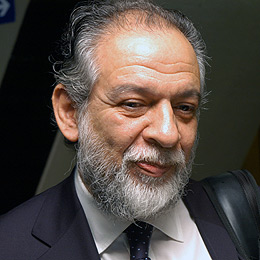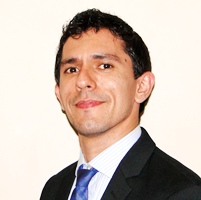IONS ELO – 2019
Mais informações podem ser visualizadas na pagina do evento aqui.
Contextualização
- OSA
A OSA (Sigla para The Optical Society) é uma sociedade científica global dedicada ao estudo e promoção do conhecimento em áreas relacionadas a óptica e fotônica. Criada em 1916, hoje ela conta com mais de 22.000 membros em 100 países. No seu histórico, destacam-se 37 membros laureados com o prêmio Nobel nas áreas de física, química e medicina. Além disso, a OSA conta com mais de 377 seções denominadas de Student Chapters, que consistem em organizações estudantis dedicadas a disseminação do conhecimento nas áreas de óptica e fotônica.
- IONS
IONS (sigla para International OSA Network of Students) é um evento da OSA organizado por estudantes e para estudantes. São encontros regionais, focados no desenvolvimento profissional e networking dos seus participantes. A 1a Escola Latino Americana de Óptica: IONS-ELO Idealizada por uma iniciativa de diversos capítulos regionais de estudantes, a Escola Latino Americana de Óptica (chamada de IONS-ELO) é um evento que acontecerá anualmente, organizado em diferentes cidades da America Latina. O primeiro dessa série de eventos acontecerá em Campinas, no Instituto de Física “Gleb Wataghin”, na UNICAMP. Ele será resultante da junção de dois tradicionais eventos: As Escolas de Inverno do IFGW com o IONS da OSA. Portanto, a organização está sendo feita por uma parceria entre o Capítulo de Estudantes da OSA na UNICAMP e a Comissão de Pós-Graduação do IFGW (CPG).
- Local
Instituto de Física “Gleb Wataghin” (IFGW) na UNICAMP.
- Data
22 a 26 de julho
- Público Alvo
Estudantes de física, engenharia e áreas correlatas a óptica e fotônica no final da graduação e começo da pós-graduação. Além de brasileiros, é esperada uma alta adesão de alunos de outros países da América Latina.
- Atividades
- Aulas conceituais: Serão ministradas aulas sobre fundamentos e aplicações em 4 diferentes temas de relevância para pesquisas atuais em óptica e fotônica. Os temas até o momento são: Fenômenos Ultrarrápidos, Comunicações Ópticas, Materiais Complexos e Biofotônica.
- Aulas práticas: Além das aulas conceituais, serão oferecidos cursos práticos, em laboratórios de pesquisa do próprio instituto.
- Plenárias: Serão dadas duas plenárias sobre temas de pesquisa atuais por pesquisadores reconhecidos internacionalmente nas suas áreas de atuação.
- Workshop: Será oferecido um workshop sobre os desafios e o processo de construção de uma carreira no meio acadêmico.
- Apresentações Orais: Os alunos também terão a oportunidade de apresentarem os seus trabalhos de pesquisa em apresentações orais, de 15 minutos, com tempo para perguntas pelos participantes.
- Apresentação de Posters: Além das apresentações orais, os alunos também terão a oportunidade de expor os seus trabalhos no formato de pôster.
- Atividade de Networking: Uma das noites será reservada para os estudantes realizarem networking com os seus pares e com os professores participantes da escola. Essa atividade deverá ser realizada em um espaço cultural, com dança, música e um ambiente propício para a interação.
- Visita ao Sirius: Uma das tardes do evento será reservada para os alunos conhecerem a mais nova fonte de luz sincrotron brasileira, o Sirius, no Laboratório Nacional de Luz Sincrotron (LNLS).
- Atividade Turística: O último dia do evento será reservado para uma visita turística na cidade de São Paulo.
- Palestrantes confirmados até o momento

Steven Cundiff is an American experimental physicist and the Harrison M. Randall collegiate professor of physics at the University of Michigan. His research interests include the production and manipulation of ultrafast pulses, in particular for applications in studying light-matter interactions. Cundiff is a Fellow of American Physical Society, the Optical Society and the Institute of Electrical and Electronics Engineers. He is the co-author of the standard reference for frequency combstitled Femtosecond Optical Frequency Comb: Principle, Operation and Application.

Akhlesh Lakhtakia is Evan Pugh University Professor and Charles Godfrey Binder Professor of Engineering Science and Mechanics at the Pennsylvania State University. His research focuses on electromagnetic fields in complex materials, such as sculptured thin films, chiral materials and bianisotropy. His recent work on industrially scalable bioreplication, an emerging form of engineered biomimicry, has promise for harvesting of solar energy as well as for pest eradication. His technique for visualization of latent fingerprints was covered in a NOVA film in 2012.
Samuel Serna is one of the 2019 OSA Ambassadors. He is developing novel hybrid devices in silicon using photonic crystal waveguides and cavities and exploring methodologies to measure their nonlinear properties. Currently, he leads an international initiative between France (C2N) in Dr. Laurent Vivien’s group and the USA (MIT) in Prof. Juejun Hu’s group to develop chalcogenide hybrid waveguides for nonlinear integrated photonic applications . He was the President of the OSA-SPIE student chapter in 2010 at the National University of Colombia (Sede Medellin ). He was also the President of the Student Chapter of Optics – Paris, Palaiseau Cedex, France.

Hugo Fragnito received his B.Sc. from the Universidad de Buenos Aires (1976) and his PHD from Unicamp (1984). He was a guest researcher at the AT&T Bell Laboratories (Holmdel, 1987-1989). He was a Full Professor at Unicamp, director of the Center of Optics and Photonics Research (CePOF-Unicamp), Coordinator of the National Institute of Photonics Science and Technology (Fotonicom) and Coordinator of the KyaTera Project. He works with nonlinear optics, parametric devices, optical amplifiers, WDM systems, photonic crystal fibers and photon-phonon interactions in optical fibers. He is now a Full Professor at Mackenzie University, in São Paulo.

Ivan Aldaya received his bachelor in telecommunications engineeringfrom the Univesity of Navarra (2006) and his PHd in technonolgy and communications from the Monterrey Institute of Technology and Higher Education (2013). He is now an assistent professor at the State University of São Paulo. He works with optical communications and photonic devices.

Rickson Mesquita is an Assistant Professor (MS3-1) at the University of Campinas (Unicamp) and a visiting Professor at the University of Pennsylvania (Penn). He received his B.Sc. (Physics) from Unicamp in 2002, andhis Ph.D. from the same university in 2009, after spending one year as a visitor student at the Optics Division of the Massachusetts General Hospital (PMI Lab, David Boas, PI). His Ph.D. thesis introduced the applications of diffuse optics to neuroscience in Brazil. He joined the Gleb Wataghin Physics Institute (IFGW) of the University of Campinas in February 2011, following a two-year postdoctoral fellowship at UPenn (Biomedical Optics Lab, Arjun Yodh, PI). His current interests span fundamental and applied questions in optics, medical physics and biophysics. Areas of ongoing research include: biomedical optics, light transport in diffusive media, optical properties of tissues, functional imaging and spectroscopy of living tissues, photodynamic therapy and cancer.

Lázaro Padilha received his BSc. in Physics in 2001 and his PhD in 2006 from the Universidade Estadual de Campinas. The main topic of his thesis research was nonlinear optical processes in CdSe and CdTe quantum dots. After his PhD, he worked as post-doctoral researcher at CREOL – University of Central Florida, working on nonlinear optcial materials, and at the Los Alamos National Laboratory, ehre the research was focused on multiexciton interaction in semiconductor nanostructures. Currently, Padilha is an Assistant Professor at the Instituto de Física “Gleb Wataghin”, at the Universidade Estadual de Campinas. Understanding novel physical phenomena in quantum confined structures through advanced spectroscopy techniques, going from the fundamental studies to the device testing, is the main interest of the Ultrafast Spectroscopy Laboratory led by Prof. Padilha, within the Ultrafast Phenomena and Optical Communications Group – GFURCO. The group main tool is based on ultrafast laser systems, with pulses down to 20 fs, which allows the monitoring of most of the recovery processes involved in electron dynamics.
